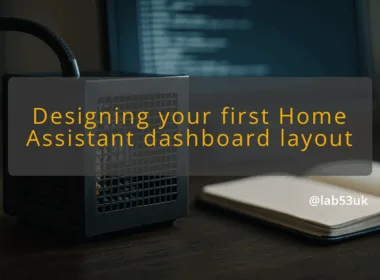Building a Skills-Based Hiring Framework: Tools and Techniques
Skills-based hiring cuts through polished CVs. It focuses on what people can actually do. I walk through a practical framework you can use, the tools that make it repeatable, and ways to verify that a candidate’s work is genuine. I include hands-on examples and settings you can copy.
Design the framework: roles, skills maps and scoring
Start by mapping the role to concrete skills. I break this into steps you can follow.
- List the job outcomes. Write three clear outcomes the hire must deliver in the first six months. Keep them measurable. Example: “Ship two feature releases with automated tests and zero critical bugs”.
- Extract the skills needed for those outcomes. Divide into core and adjacent skills. For a backend engineer:
- Core: system design, API design, testing, debugging, language fluency.
- Adjacent: observability, CI/CD, security basics.
- Build a skills map. Put each skill into a row and add columns for proficiency levels: basic, competent, advanced. Describe what each level looks like in one sentence. Example: “Testing – competent: writes unit tests with >70% coverage for new modules and uses mocks where appropriate.”
- Weight the skills against outcomes. Assign a simple percentage to each skill so scores add to 100. Example split: practical task 45%, portfolio evaluation 25%, live problem session 20%, communication 10. Those percentages are an operational example you can tweak.
- Create a scoring rubric. For each assessment instrument, define pass marks and borderline ranges. Use numeric scores, not pass/fail, so you can compare candidates.
- Calibrate the rubric. Trial the rubric on current people or known contractors. Score three people you trust and check that scores align with real performance. If they don’t, adjust the descriptions or weights.
Concrete example: for a mid-level backend role I use a two-hour take-home task (45%); a 30-minute portfolio walkthrough (25%); a 40-minute pair-programming session (20%); and a short behavioural interview (10%). That setup catches people who can actually deliver running code, who can explain past work, and who can collaborate.
Verification: run the framework on five recent hires or known freelancers. Track whether hires who scored above the pass mark hit their first-quarter outcomes. If correlation is weak, loosen the take-home task or alter scoring criteria.
Tools and techniques: assessments, portfolios and AI checks
Match tools to the part of the pipeline they buy you time on. Use automated candidate assessment tools for scale. Use human checks where provenance matters.
Screening and automated assessments
- Use short, focused tests for basics: language syntax, data structures, or domain knowledge. Tools like Criteria Corp or CodeSignal handle scale and reporting. Keep these tests under 30 minutes to avoid attrition.
- Use candidate assessment tools to standardise scoring. Configure them to output numeric scores that feed into your rubric.
Take-home tasks and portfolio evaluation
- Make take-home tasks mirror real work. Give a concrete brief, a small dataset or stub service, and ask for a repo. Limit to 2–4 hours of honest effort.
- Ask for a commit history and a README that explains design choices. That metadata is often where provenance shows up.
- For portfolio evaluation, follow a checklist:
- Role clarity: what part of the project did the candidate do?
- Depth: are there tests, CI config, deployment notes?
- Provenance: is there a public repo or recorded demo?
- Reuse vs original work: check for copied boilerplate.
- During the portfolio walkthrough, insist the candidate open files and explain recent commits. That exposes understanding quickly.
Live sessions and validation
- Use short live sessions for verification. Pair programming for 30–45 minutes exposes thinking and practical skills.
- Ask the candidate to recreate or extend one piece of their take-home task in a short timebox. Time-limited, reproducible tasks are harder to fake.
- Use behavioural questions tied to outcomes. Ask for a concrete example of when their code reduced a bug rate or improved latency.
AI in recruitment and the challenge of fake work
AI in recruitment has changed how candidates present themselves. Many use AI to polish CVs and write nicer explanations. That makes provenance checks essential.
Practical mitigations against AI-inflated submissions:
- Require git history. AI rarely fakes realistic commit messages and timestamps under pressure.
- Ask for short videos or a recorded walkthrough of the code running locally.
- Use oral walkthroughs where the candidate explains design choices and trade-offs. If they can explain why they chose one pattern over another, the work is likely genuine.
- Include a small in-session task that builds on the candidate’s project. That confirms familiarity.
Candidate assessment tools and ethics
- Pick tools that report granular scores and let you export results. That keeps the framework auditable.
- Be cautious with tools that make black-box hiring decisions. Use their output as one data point, not the final decision.
- Monitor for bias in your assessments. Audit test pass rates across demographic slices and adjust or replace tests that systematically disadvantage groups.
Putting it all together: pipeline example
- Lightweight screening test (20 minutes) via assessment tool.
- Short portfolio submission with public repo and README.
- Two-hour take-home task with git history.
- 45-minute live pair-programming and walkthrough.
- Final behavioural interview focused on outcome delivery.
Measure and iterate
- Track key metrics: offer acceptance rate, first-quarter delivery vs expected outcomes, and correlation between assessment score and on-the-job performance.
- Re-run calibration every six months. Skills change and so should the tests.
Takeaways
Build a skills-based hiring framework that maps to real outcomes. Use a mix of automated candidate assessment tools and human checks. Make provenance the priority: git history, live walkthroughs and short in-session tasks reveal genuine skill. Treat AI in recruitment as a reason to shift from polished narratives to demonstrable work. I recommend starting with one role, run the process on five candidates, measure the results and adapt the rubric before scaling.









